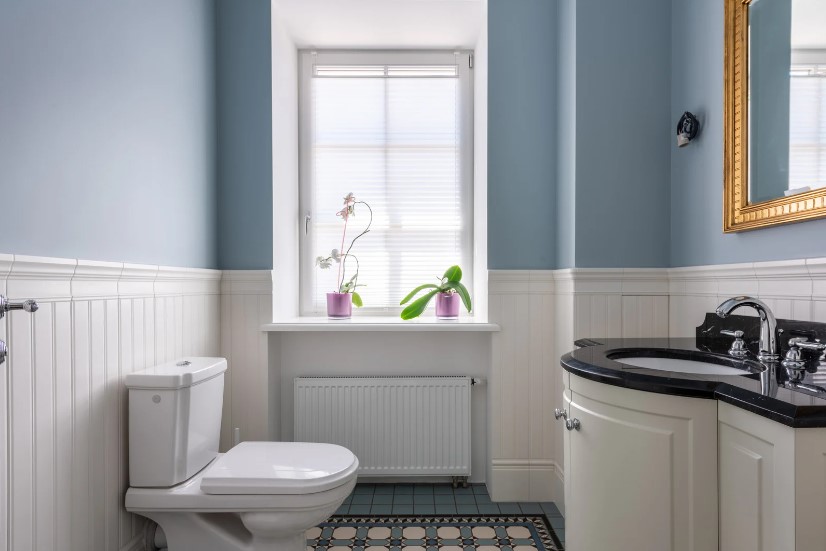When designing your bathroom, every detail matters, and one of the often-overlooked features is wainscoting. This charming and practical architectural element can elevate your bathroom’s aesthetics, but it’s crucial to get the height right.
So, how high should you wainscot a bathroom wall? Let’s explore.
The General Rule of Thumb for Wainscoting Height
Generally speaking, wainscoting is typically installed at one-third or two-thirds the height of the wall.
For example, if your bathroom walls are nine feet high, wainscoting at three feet (one-third) or six feet (two-thirds) could work well.
These measurements can ensure visual interest and balance. But remember, these are not strict rules, and various factors may influence your decision.
Considering Bathroom Specifics
In bathrooms, you may want to adjust the height of your wainscoting based on specific factors. Here’s what to consider:
Vanity and Sink Height
The height of your bathroom vanity and sink can play a significant role in deciding the height of your wainscoting.
For a cohesive look, the wainscoting can line up with the top of the sink or vanity. Most bathroom sinks or vanities are about 34 inches high, which might work perfectly if your bathroom has standard eight or nine-foot ceilings.
Toilet Height
Likewise, you might want to align the wainscoting with the top of your toilet tank.
The standard toilet height is about 14 to 17 inches, but the tank usually sits higher, around 31 to 33 inches.
If your wainscoting height aligns with the top of the toilet tank, it can create a visually pleasing line across the room.
Tile or Panel Size
The size of the wainscoting panels or tiles can also impact how high you install it.
If you’re using tile wainscoting, you’ll want to choose a height that allows for whole tiles, avoiding unsightly cut tile edges.
The same rule applies to panel wainscoting; it’s best to avoid cutting panels if possible.
The Impact of Ceiling Height
Higher ceilings call for taller wainscoting, while shorter ceilings work best with shorter wainscoting.
For example, if your bathroom ceiling is ten feet high or more, you might want to consider higher wainscoting to avoid making the room feel too tall and narrow.
Why Bathroom Wainscoting?
Besides protecting your bathroom walls from water damage, wainscoting can lend your bathroom a more refined, sophisticated appearance.
It’s a relatively cost-effective way to enhance your bathroom aesthetics and impart a touch of timeless elegance.
In Summary
The ideal height for wainscoting in your bathroom depends on a variety of factors including the height of your ceiling, the height of your fixtures, and the size of your panels or tiles.
While the general rule of thumb is one-third to two-thirds the height of your wall, these factors might lead you to choose a slightly different height.
In the end, the goal is to create a balanced, visually pleasing space that you’ll love for years to come.
FAQs
1. What is the standard height for bathroom wainscoting?
The standard height is typically between 34 to 36 inches, often aligned with the top of the sink or vanity.
2. Can I install wainscoting on my own?
Yes, with some basic DIY skills, you can install wainscoting yourself.
3. Can wainscoting be installed over tile?
Yes, wainscoting can be installed over tile with the correct preparation and materials.
4. How do I clean bathroom wainscoting?
Most wainscoting materials can be cleaned using a damp cloth and mild detergent, depending on the material.
